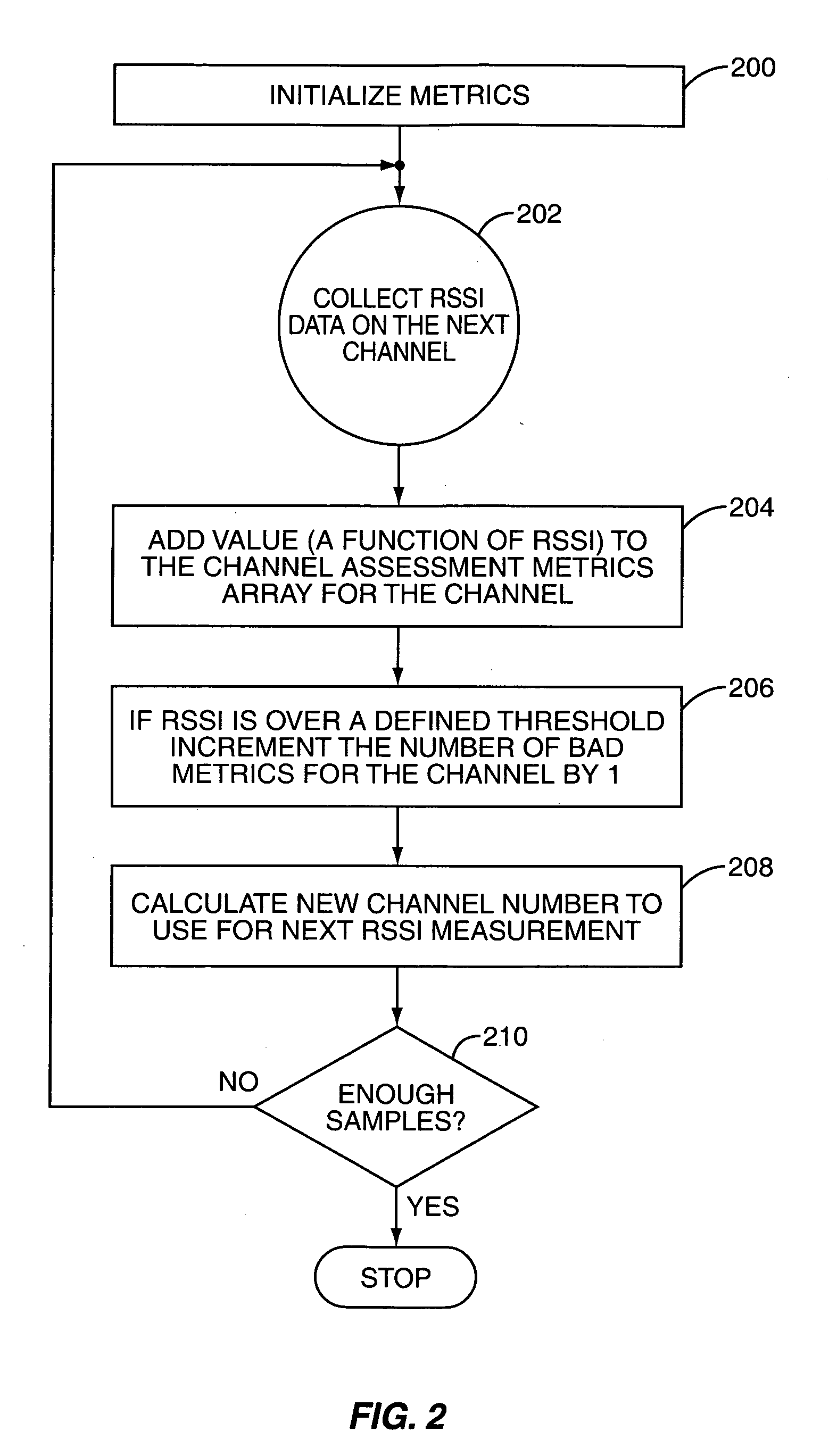Method and apparatus for performing channel assessment in a wireless communication system
a wireless communication system and channel assessment technology, applied in the field of wireless communication systems, can solve problems such as noise and interference, data reception errors can be caused, signal interference distorts signals and their associated data, and noise and interference is radio-frequency interferen
- Summary
- Abstract
- Description
- Claims
- Application Information
AI Technical Summary
Benefits of technology
Problems solved by technology
Method used
Image
Examples
Embodiment Construction
[0029] The embodiments set forth below represent the necessary information to enable those skilled in the art to practice the invention and illustrate the best mode of practicing the invention. Upon reading the following description in light of the accompanying drawing figures, those skilled in the art will understand the concepts of the invention and will recognize applications of these concepts not particularly addressed herein. It should be understood that these concepts and applications fall within the scope of the disclosure and the accompanying claims.
[0030]FIG. 1 illustrates an exemplary system 10 including a Bluetooth device 12, a wireless device 14 operating according to either the 802.11b or 802.11g standard, and a host 16. In general, the Bluetooth device 12 and the wireless device 14 communicate via a hardware interface 18 to exchange information such as priority information and channel information. The host 16 may be a personal computer, a mobile telephone, a personal ...
PUM
 Login to View More
Login to View More Abstract
Description
Claims
Application Information
 Login to View More
Login to View More - R&D
- Intellectual Property
- Life Sciences
- Materials
- Tech Scout
- Unparalleled Data Quality
- Higher Quality Content
- 60% Fewer Hallucinations
Browse by: Latest US Patents, China's latest patents, Technical Efficacy Thesaurus, Application Domain, Technology Topic, Popular Technical Reports.
© 2025 PatSnap. All rights reserved.Legal|Privacy policy|Modern Slavery Act Transparency Statement|Sitemap|About US| Contact US: help@patsnap.com



